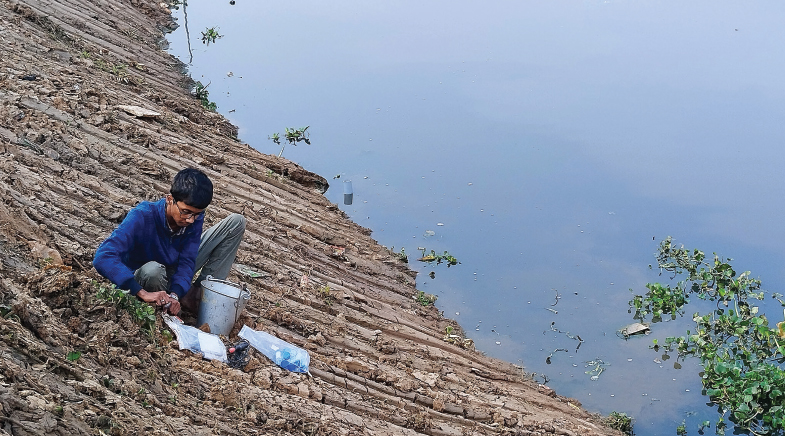Recalling the shape of things
-
- from Shaastra :: vol 04 issue 07 :: Aug 2025

A study shows how plants regrow by changing cellular geometry.
Unlike most members of the animal kingdom, plants have an uncanny ability to regrow their wounded or lost parts into their original shapes. But scientists never knew how and why. Now, a team of researchers at the Indian Institute of Science Education and Research (IISER) Pune, led by Kalika Prasad, an Associate Professor of Biology, has cracked this mystery with researchers elsewhere.
In a paper published in the journal Current Biology (bit.ly/Plants-Mabel), Prasad and the team, through meticulously planned experiments and simulation studies, found out how plants restore the original shape of missing tissues. Prasad credits his PhD student and the first author of the study, Mabel Maria Mathew, with conceiving the idea and planning the experiments to unearth the mechanism by which plants do so.
CHANGING GEOMETRY
Their experiments show that when a root tip is injured, the cells around the wound do not divide randomly — they change their geometry. Using advanced microscopic and experimental tools, the team observed that normal cuboidal root cells morph into rhomboid shapes. These altered cells then divide diagonally, producing triangular prism-like cells. The diagonal divisions redirect the growth of neighbouring cells along a slanted path, collectively recreating the lost tapered tip.
To dive deeper, the IISER Pune team collaborated with mathematicians and physicists from the Netherlands, the U.K., and IISER Thiruvananthapuram. Their simulations revealed that the secret force behind these changes was internal mechanical tension, a kind of hidden stress guiding cells to change shape and divide strategically.
Mechanical growth conflicts reshape cells into rhomboidal geometries, which then guide unusual division patterns and reorient tissue growth.
"This is terrific work," says K. VijayRaghavan, former Principal Scientific Adviser to the Government of India. "It reveals a previously unrecognised, elegant mechanism by which plant roots regenerate their tapered shape after injury, driven purely by local cell behaviours," says the emeritus professor at the National Centre for Biological Sciences, Bengaluru.
The authors demonstrate that mechanical growth conflicts reshape cells into rhomboidal geometries, which then guide unusual division patterns and reorient tissue growth — all of which is explained using principles of microtubule dynamics, says VijayRaghavan, who is not affiliated with the IISER work.
The study provides insights into self-organised morphogenesis (development of shape in cells, tissues and organisms) by combining experimental manipulation with computational modelling. It shows form restoration can emerge from local rules without the need for a central organiser, VijayRaghavan explains.
Have a
story idea?
Tell us.
Do you have a recent research paper or an idea for a science/technology-themed article that you'd like to tell us about?
GET IN TOUCH














